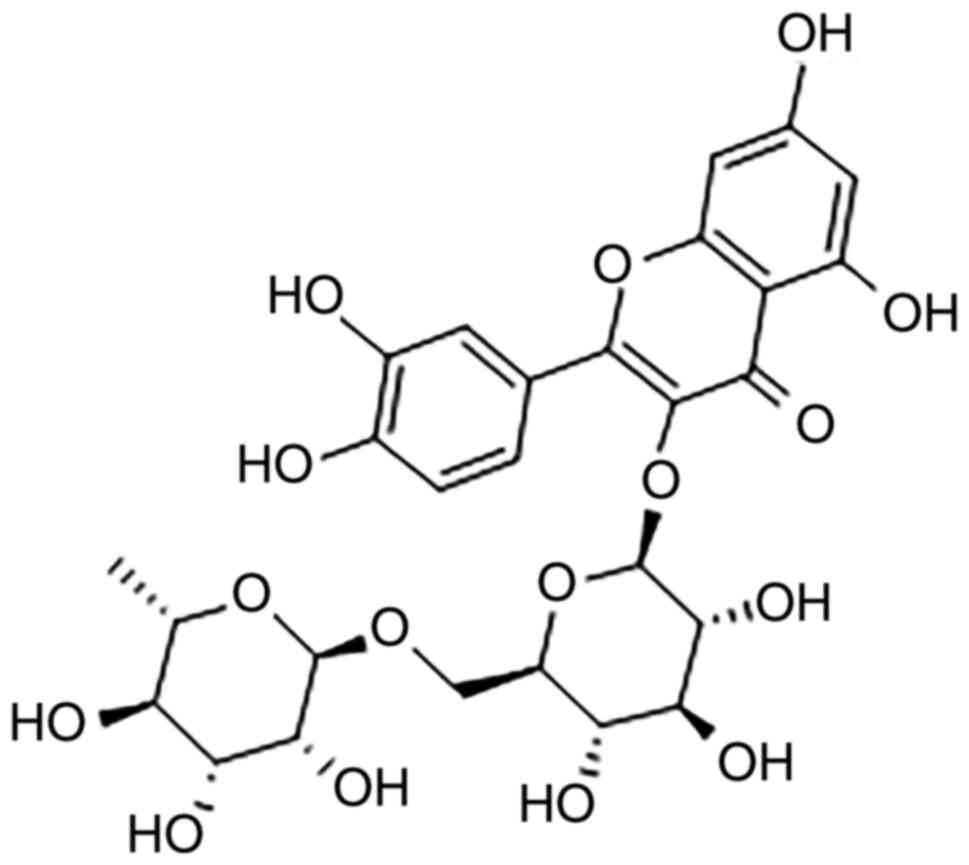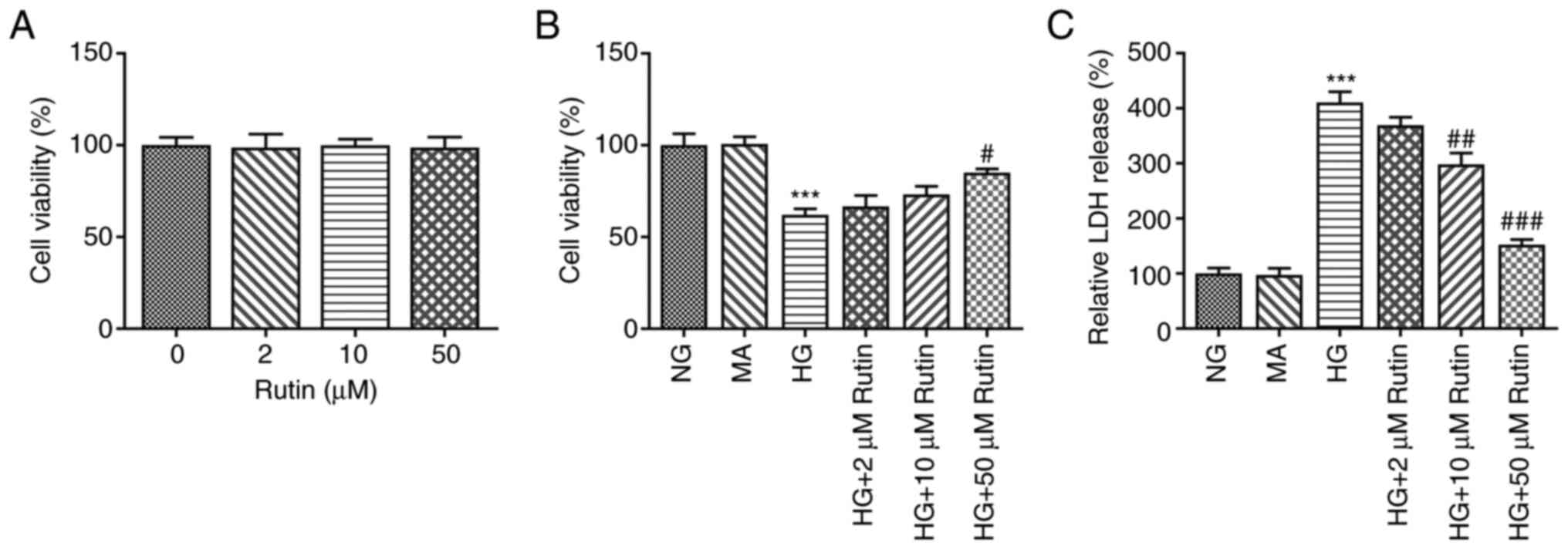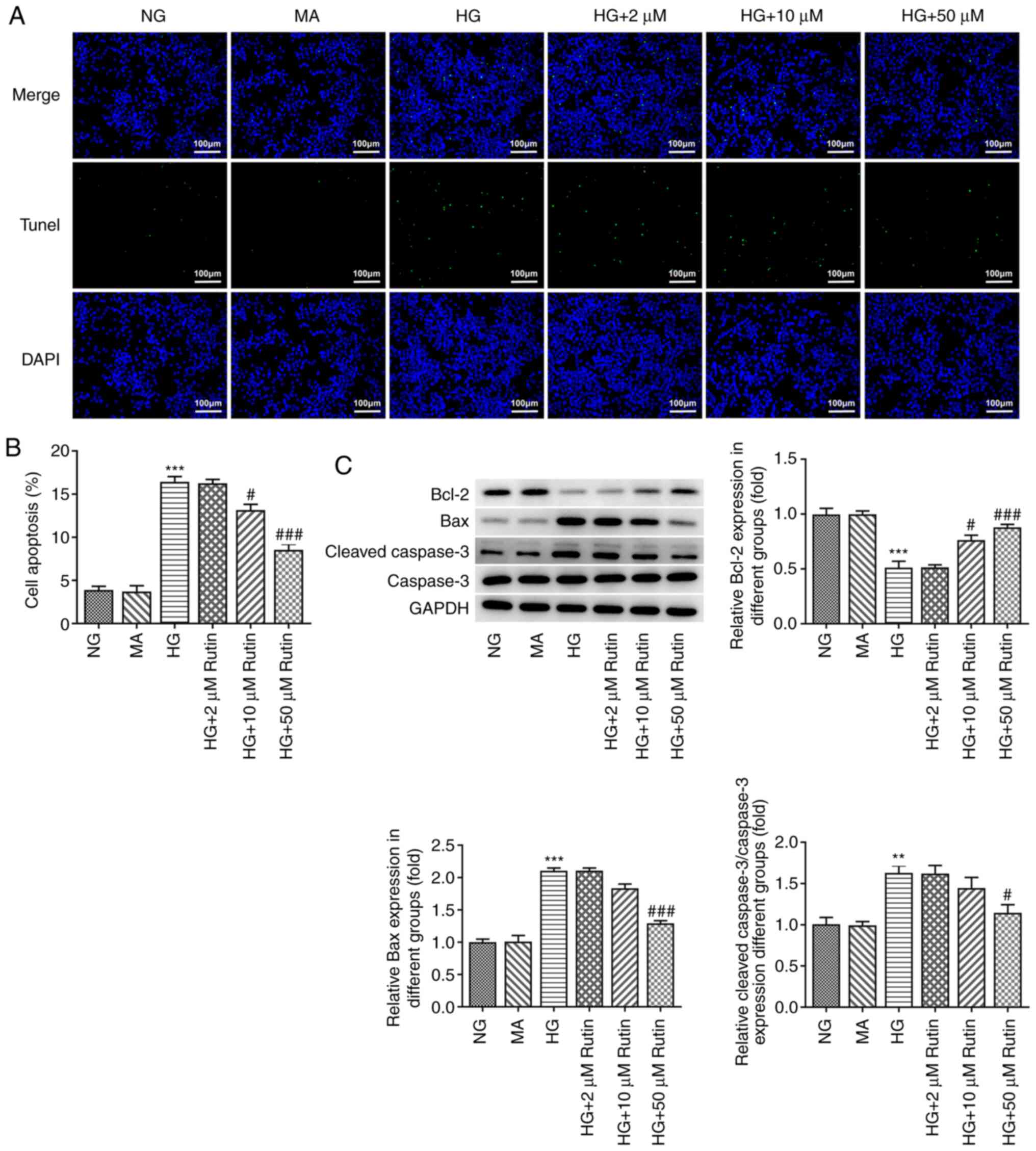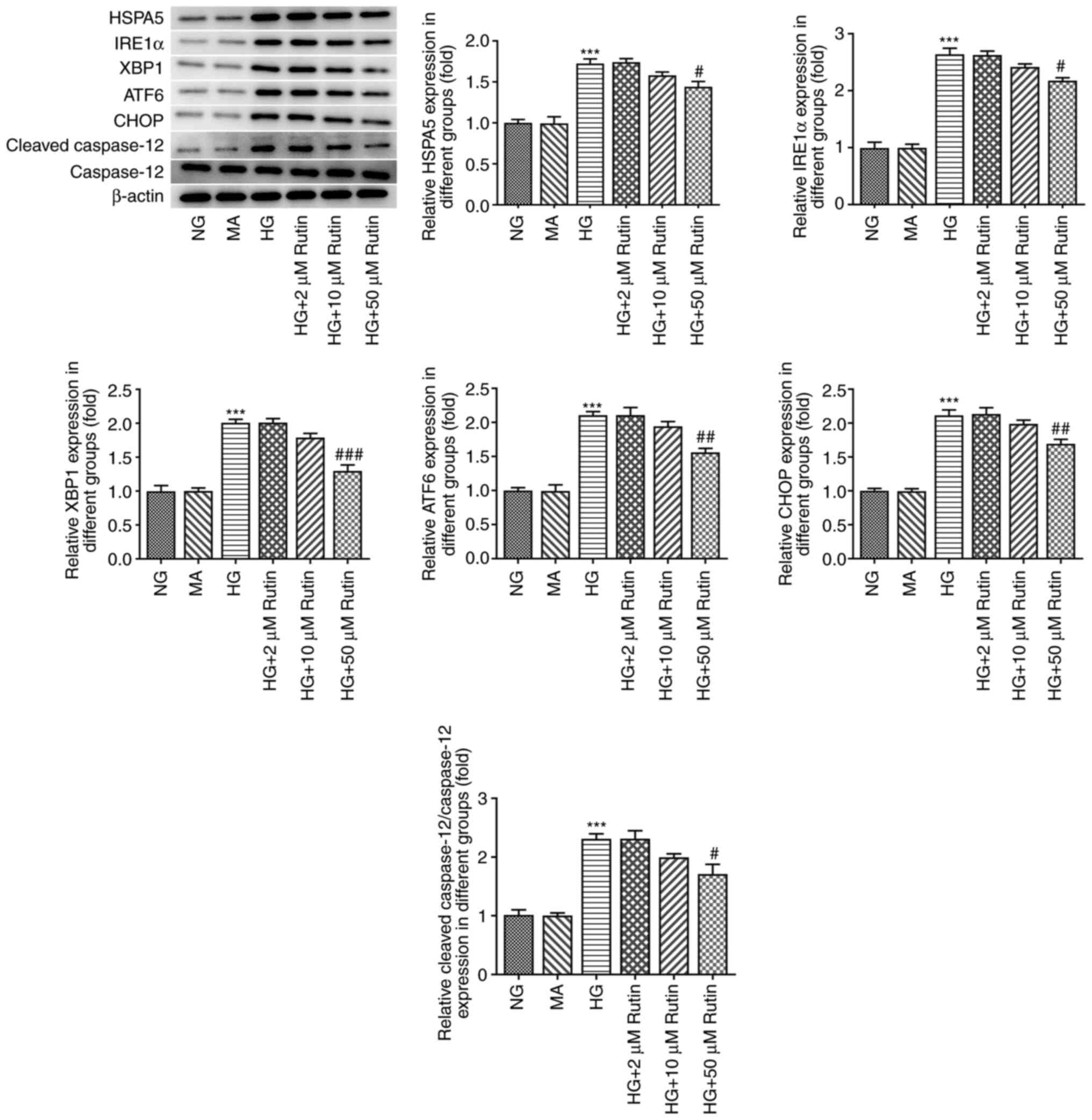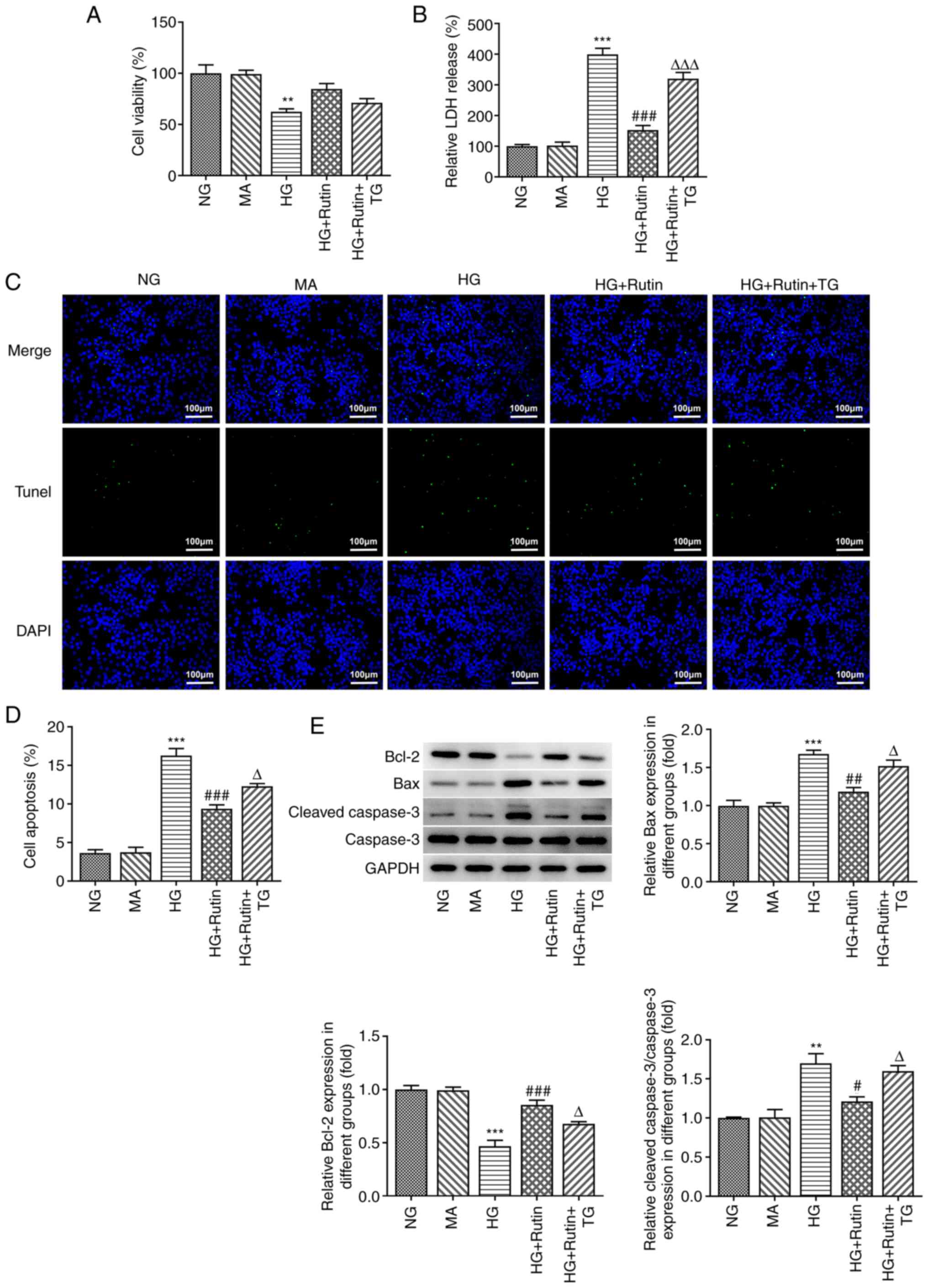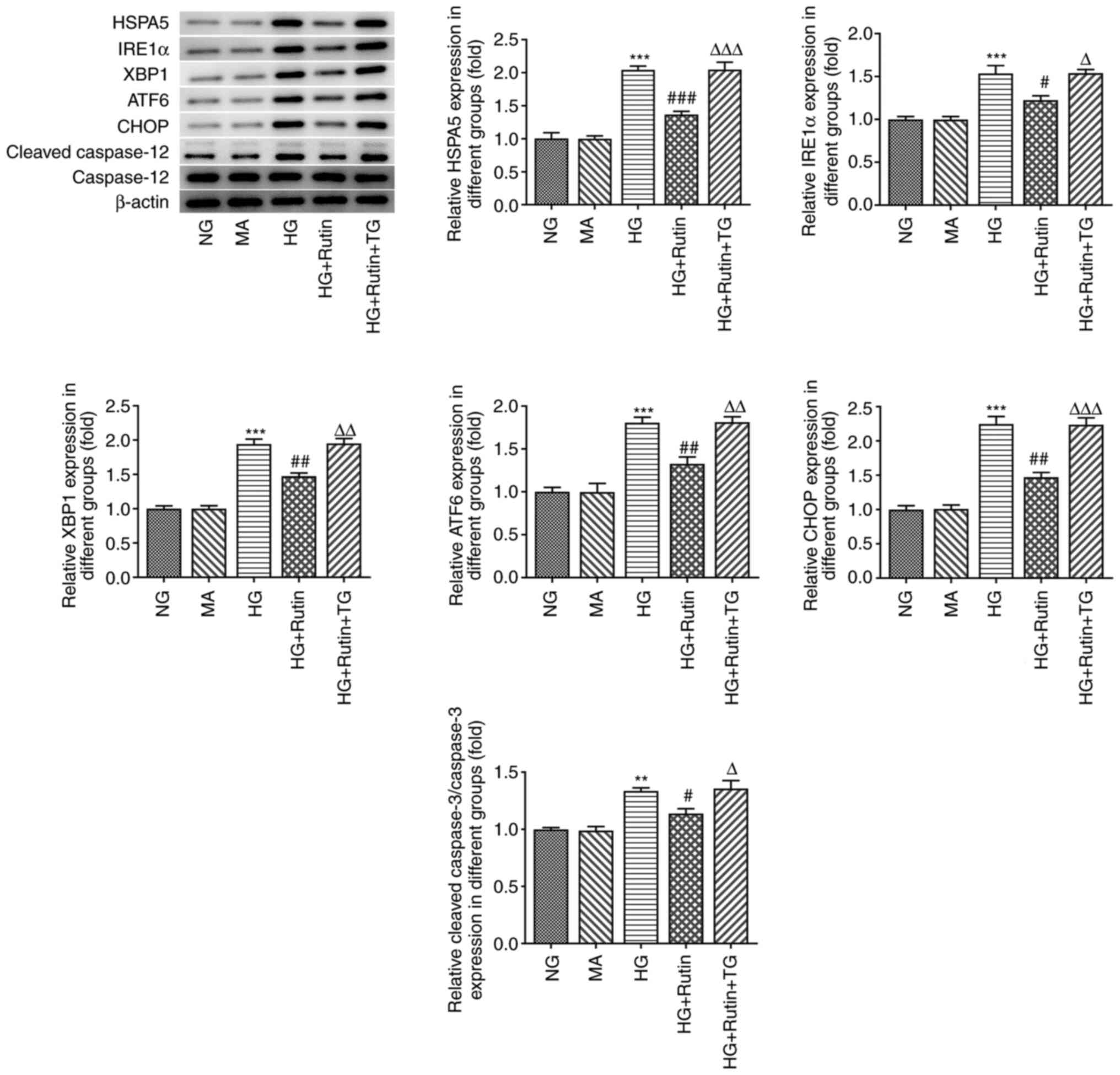|
1
|
Lorenzo-Almoros A, Cepeda-Rodrigo JM and
Lorenzo O: Diabetic cardiomyopathy. Rev Clin Esp, 2020 (In English,
Spanish) (Epub ahead of print).
|
|
2
|
Xia L and Song M: Role of non-coding RNA
in diabetic cardiomyopathy. Adv Exp Med Biol. 1229:181–195.
2020.PubMed/NCBI View Article : Google Scholar
|
|
3
|
Tan Y, Zhang Z, Zheng C, Wintergerst KA,
Keller BB and Cai L: Mechanisms of diabetic cardiomyopathy and
potential therapeutic strategies: Preclinical and clinical
evidence. Nat Rev Cardiol. 17:585–607. 2020.PubMed/NCBI View Article : Google Scholar
|
|
4
|
Hosseinzadeh H and Nassiri-Asl M: Review
of the protective effects of rutin on the metabolic function as an
important dietary flavonoid. J Endocrinol Invest. 37:783–788.
2014.PubMed/NCBI View Article : Google Scholar
|
|
5
|
Ganeshpurkar A and Saluja AK: The
pharmacological potential of rutin. Saudi Pharm J. 25:149–164.
2017.PubMed/NCBI View Article : Google Scholar
|
|
6
|
Dubey S, Ganeshpurkar A, Shrivastava A,
Bansal D and Dubey N: Rutin exerts antiulcer effect by inhibiting
the gastric proton pump. Indian J Pharmacol. 45:415–417.
2013.PubMed/NCBI View Article : Google Scholar
|
|
7
|
Ruangsuriya J, Charumanee S, Jiranusornkul
S, Sirisa-Ard P, Sirithunyalug B, Sirithunyalug J, Pattananandecha
T and Saenjum C: Depletion of β-sitosterol and enrichment of
quercetin and rutin in Cissus quadrangularis Linn fraction enhanced
osteogenic but reduced osteoclastogenic marker expression. BMC
Complement Med Ther. 20(105)2020.PubMed/NCBI View Article : Google Scholar
|
|
8
|
Manzoni AG, Passos DF, Leitemperger JW,
Storck TR, Doleski PH, Jantsch MH, Loro VL and Leal DBR:
Hyperlipidemia-induced lipotoxicity and immune activation in rats
are prevented by curcumin and rutin. Int Immunopharmacol.
81(106217)2020.PubMed/NCBI View Article : Google Scholar
|
|
9
|
Nouri Z, Fakhri S, Nouri K, Wallace CE,
Farzaei MH and Bishayee A: Targeting multiple signaling pathways in
cancer: The rutin therapeutic approach. Cancers (Basel).
12(2276)2020.PubMed/NCBI View Article : Google Scholar
|
|
10
|
Guimaraes JF, Muzio BP, Rosa CM,
Nascimento AF, Sugizaki MM, Fernandes AA, Cicogna AC, Padovani CR,
Okoshi MP and Okoshi K: Rutin administration attenuates myocardial
dysfunction in diabetic rats. Cardiovasc Diabetol.
14(90)2015.PubMed/NCBI View Article : Google Scholar
|
|
11
|
Huang R, Shi Z, Chen L, Zhang Y, Li J and
An Y: Rutin alleviates diabetic cardiomyopathy and improves cardiac
function in diabetic ApoEknockout mice. Eur J Pharmacol.
814:151–160. 2017.PubMed/NCBI View Article : Google Scholar
|
|
12
|
Sundaram RL, Sali VK and Vasanthi HR:
Protective effect of rutin isolated from Spermococe hispida against
cobalt chloride-induced hypoxic injury in H9c2 cells by inhibiting
oxidative stress and inducing apoptosis. Phytomedicine. 51:196–204.
2018.PubMed/NCBI View Article : Google Scholar
|
|
13
|
Jeong JJ, Ha YM, Jin YC, Lee EJ, Kim JS,
Kim HJ, Seo HG, Lee JH, Kang SS, Kim YS and Chang KC: Rutin from
Lonicera japonica inhibits myocardial ischemia/reperfusion-induced
apoptosis in vivo and protects H9c2 cells against hydrogen
peroxide-mediated injury via ERK1/2 and PI3K/Akt signals in vitro.
Food Chem Toxicol. 47:1569–1576. 2009.PubMed/NCBI View Article : Google Scholar
|
|
14
|
Oakes SA: Endoplasmic reticulum stress
signaling in cancer cells. Am J Pathol. 190:934–946.
2020.PubMed/NCBI View Article : Google Scholar
|
|
15
|
Liu Q, Korner H, Wu H and Wei W:
Endoplasmic reticulum stress in autoimmune diseases. Immunobiology.
225(151881)2020.PubMed/NCBI View Article : Google Scholar
|
|
16
|
Hetz C and Saxena S: ER stress and the
unfolded protein response in neurodegeneration. Nat Rev Neurol.
13:477–491. 2017.PubMed/NCBI View Article : Google Scholar
|
|
17
|
Wang Y, Cao L and Liu X: Ghrelin
alleviates endoplasmic reticulum stress and inflammation-mediated
reproductive dysfunction induced by stress. J Assist Reprod Genet.
36:2357–2366. 2019.PubMed/NCBI View Article : Google Scholar
|
|
18
|
Lima NCR, Melo TQ, Sakugawa AYS, Melo KP
and Ferrari MFR: Restoration of Rab1 levels prevents endoplasmic
reticulum stress in hippocampal cells during protein aggregation
triggered by rotenone. Neuroscience. 419:5–13. 2019.PubMed/NCBI View Article : Google Scholar
|
|
19
|
Brenjian S, Moini A, Yamini N, Kashani L,
Faridmojtahedi M, Bahramrezaie M and Amidi F: Resveratrol treatment
in patients with polycystic ovary syndrome decreased
pro-inflammatory and endoplasmic reticulum stress markers. Am J
Reprod Immunol. 83(e13186)2020.PubMed/NCBI View Article : Google Scholar
|
|
20
|
Suzuki R, Fujiwara Y, Saito M, Arakawa S,
Shirakawa JI, Yamanaka M, Komohara Y, Marumo K and Nagai R:
Intracellular accumulation of advanced glycation end products
induces osteoblast apoptosis via endoplasmic reticulum stress. J
Bone Miner Res. 35:1992–2003. 2020.PubMed/NCBI View Article : Google Scholar
|
|
21
|
Villalobos-Labra R, Subiabre M, Toledo F,
Pardo F and Sobrevia L: Endoplasmic reticulum stress and
development of insulin resistance in adipose, skeletal, liver, and
foetoplacental tissue in diabesity. Mol Aspects Med. 66:49–61.
2019.PubMed/NCBI View Article : Google Scholar
|
|
22
|
Rozpedek W, Pytel D, Mucha B, Leszczynska
H, Diehl JA and Majsterek I: The Role of the PERK/eIF2α/ATF4/CHOP
signaling pathway in tumor progression during endoplasmic reticulum
stress. Curr Mol Med. 16:533–544. 2016.PubMed/NCBI View Article : Google Scholar
|
|
23
|
Su S, Li X, Li S, Ming P, Huang Y, Dong Y,
Ding H, Feng S, Li J, Wang X, et al: Rutin protects against
lipopolysaccharide-induced mastitis by inhibiting the activation of
the NF-κB signaling pathway and attenuating endoplasmic reticulum
stress. Inflammopharmacology. 27:77–88. 2019.PubMed/NCBI View Article : Google Scholar
|
|
24
|
Cao R, Fang D, Wang J, Yu Y, Ye H, Kang P,
Li Z, Wang H and Gao Q: ALDH2 overexpression alleviates high
glucose-induced cardiotoxicity by inhibiting NLRP3 inflammasome
activation. J Diabetes Res. 2019(4857921)2019.PubMed/NCBI View Article : Google Scholar
|
|
25
|
Bugger H and Abel ED: Molecular mechanisms
of diabetic cardiomyopathy. Diabetologia. 57:660–671.
2014.PubMed/NCBI View Article : Google Scholar
|
|
26
|
Tadic M, Cuspidi C, Calicchio F, Grassi G
and Mancia G: Diabetic cardiomyopathy: How can cardiac magnetic
resonance help? Acta Diabetol. 57:1027–1034. 2020.PubMed/NCBI View Article : Google Scholar
|
|
27
|
Zeng Z, Huang N, Zhang Y, Wang Y, Su Y,
Zhang H and An Y: CTCF inhibits endoplasmic reticulum stress and
apoptosis in cardiomyocytes by upregulating RYR2 via inhibiting
S100A1. Life Sci. 242(117158)2020.PubMed/NCBI View Article : Google Scholar
|
|
28
|
Li L, Peng X, Guo L, Zhao Y and Cheng Q:
Sepsis causes heart injury through endoplasmic reticulum
stress-mediated apoptosis signaling pathway. Int J Clin Exp Pathol.
13:964–971. 2020.PubMed/NCBI
|
|
29
|
Wilson AJ, Gill EK, Abudalo RA, Edgar KS,
Watson CJ and Grieve DJ: Reactive oxygen species signalling in the
diabetic heart: Emerging prospect for therapeutic targeting. Heart.
104:293–299. 2018.PubMed/NCBI View Article : Google Scholar
|
|
30
|
Yang H, Wang C, Zhang L, Lv J and Ni H:
Rutin alleviates hypoxia/reoxygenation-induced injury in myocardial
cells by up-regulating SIRT1 expression. Chem Biol Interact.
297:44–49. 2019.PubMed/NCBI View Article : Google Scholar
|
|
31
|
Wang Y, Zhang Y, Sun B, Tong Q and Ren L:
Rutin protects against pirarubicin-induced cardiotoxicity through
TGF-β1-p38 MAPK signaling pathway. Evid Based Complement Alternat
Med. 2017(1759385)2017.PubMed/NCBI View Article : Google Scholar
|
|
32
|
Ganesan D, Albert A, Paul E,
Ananthapadmanabhan K, Andiappan R and Sadasivam SG: Rutin
ameliorates metabolic acidosis and fibrosis in alloxan induced
diabetic nephropathy and cardiomyopathy in experimental rats. Mol
Cell Biochem. 471:41–50. 2020.PubMed/NCBI View Article : Google Scholar
|
|
33
|
Ardic S, Gumrukcu A, Gonenc Cekic O, Erdem
M, Reis Kose GD, Demir S, Kose B, Yulug E, Mentese A and Turedi S:
The value of endoplasmic reticulum stress markers (GRP78 and CHOP)
in the diagnosis of acute mesenteric ischemia. Am J Emerg Med.
37:596–602. 2019.PubMed/NCBI View Article : Google Scholar
|
|
34
|
Oakes SA and Papa FR: The role of
endoplasmic reticulum stress in human pathology. Annu Rev Pathol.
10:173–194. 2015.PubMed/NCBI View Article : Google Scholar
|
|
35
|
Hetz C and Papa FR: The unfolded protein
response and cell fate control. Mol Cell. 69:169–181.
2018.PubMed/NCBI View Article : Google Scholar
|
|
36
|
Hetz C: The unfolded protein response:
Controlling cell fate decisions under ER stress and beyond. Nat Rev
Mol Cell Biol. 13:89–102. 2012.PubMed/NCBI View
Article : Google Scholar
|
|
37
|
Gong J, Wang XZ, Wang T, Chen JJ, Xie XY,
Hu H, Yu F, Liu HL, Jiang XY and Fan HD: Molecular signal networks
and regulating mechanisms of the unfolded protein response. J
Zhejiang Univ Sci B. 18:1–14. 2017.PubMed/NCBI View Article : Google Scholar
|
|
38
|
Wu Z, Wang H, Fang S and Xu C: Roles of
endoplasmic reticulum stress and autophagy on H2O2-induced
oxidative stress injury in HepG2 cells. Mol Med Rep. 18:4163–4174.
2018.PubMed/NCBI View Article : Google Scholar
|
|
39
|
Zuo S, Kong D, Wang C, Liu J, Wang Y, Wan
Q, Yan S, Zhang J, Tang J, Zhang Q, et al: CRTH2 promotes
endoplasmic reticulum stress-induced cardiomyocyte apoptosis
through m-calpain. EMBO Mol Med. 10(e8237)2018.PubMed/NCBI View Article : Google Scholar
|















